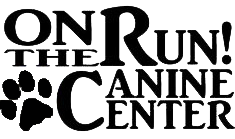
- Photo by Paws To Shoot Photography – Lisa Pertile
Are you a new puppy owner? You’re in the process of getting to know your new little one, and the first year can be a roller coaster of emotions for you and your puppy. Did you know puppies can appear confident and sensitive in different situations? They can also appear fearful and bold, depending on the environment. It’s your job to set them up for success by watching their responses, making adjustments, and building confidence by being trustworthy.
In my quirky breed – the Border Collie, they are misjudged (by non-BC owners) to be bold, confident, pushy, and resilient when observing the experienced, trained dogs. Trainers can be drawn to them because they believe training a Border Collie will eliminate the challenging issues during training and trials because of how intensely they work. The well-trained dog (in any dog sport) took much patience from the trainer and an individual approach to training and handling because of that dog’s learning style.
Back to puppies….
People worry when their puppy appears sensitive or shy around other people and dogs. Many puppies, including the herding breeds or mixes of herding breeds, are sensitive or overdramatic as youngsters. These sensitive dogs are more comfortable living in a peaceful setting without much chaos is comfortable for most of these dogs. That doesn’t mean they can’t (and do) thrive with many people, dogs, machinery, vehicles, and movement. But that must be introduced slowly and steadily to these dogs – each dog will be different. Some will immediately take to people and other dogs and be comfortable with them. Others can be fearful or overstimulated when exposed to them too quickly or pushed too much to overcome these big feelings.
Many puppy classes are unsuited for these sensitive dogs because they are bothered or stimulated by certain dogs, tight quarters, lots of downtime, and people. Chaos can cause big feelings (fear, frustration, excitement), and none of those are good habits for your puppy to learn.
The mistake that new puppy owners make is to push these little dogs out of their comfort zone because they think it will help them cope with these things later on in life. Owners often say their puppy needs to “get over it.”
Picture how a parent handles their small child when they are afraid and hide behind them. Or, the child starts crying because they fear someone, something, or a noise. The parent doesn’t push the child out to expose them more to the scary thing. They know that the youngster will eventually grow out of it. They watch for signs that the child is coping with the environment. The child can be concerned or afraid but not respond much, and the parent will leave things alone and let her (or him) watch or listen. The child doesn’t need food or treats to help. If the child is coping and watching calmly (and it is safe), the parent allows the process to unfold. And eventually, the child realizes it’s not so bad. However, if the fear from the child is causing harm, the parent will leave with them. Parents know that the child’s brain will eventually grow out of this phase and that gradual and slow exposure over time will eventually overcome the fear. The parent doesn’t push the child into the fire to ensure it “gets over” the distraction. That’s a horrible thing to do to anyone.
Also, if the child is too reckless or wild, a good parent will stop it before the child gets hurt or hurts someone else. This can be accomplished by removing, verbally telling the child to stop, or distracting the child. If the child doesn’t stop, the child is removed.
For some reason, we treat dogs differently, and many trainers will expose puppies to things too quickly because that’s what they have to get used to. Don’t make this mistake with your puppy. If you attend a puppy class, make sure it’s an instructor that understands and can adjust the environment for puppies of different personalities. If you expose your puppy to a class with out-of-control dogs – even dogs that cannot harm anyone or any other puppy – you might be doing more damage than good.
If you do dog sports, your puppy doesn’t have to like EVERYONE (and they might not). Don’t use food to help them like other people. Just because they are not super friendly doesn’t mean they will be afraid of people. But if you try too hard to make them love everyone, you might get what you don’t want. I’ve had some dogs that don’t want attention from strangers. But if that stranger ignored them and didn’t force friendliness onto them, their gradual exposure over time changed them into a special friend.
Sometimes I get a puppy that loves everyone – that has more to do with the individual dog. But both types of dogs can thrive in environments with dogs and people, like dog sports, performance, herding, and many other environments. And they can perform better if they focus more on you than other dogs and people.
So please pay attention to signs that your puppy is not okay in an environment. Don’t let people or dogs push into your dog’s space if your puppy doesn’t want them there because you might accidentally create a reactive or fearful dog. Some puppies can be dramatic with their responses to situations. Ensure you are not dramatic by overreacting to what they see or the people and dogs that might affect them. Act strong and confident. If your puppy responds slightly dramatically, wait a few moments and see if they settle down. Sometimes they need to watch a little longer, and then they are fine. But don’t push them closer because you think it will help.
Your puppy needs to know that they can trust you. The more they trust and look up to you, the more devoted they will be.
Congratulations again!


0 Comments